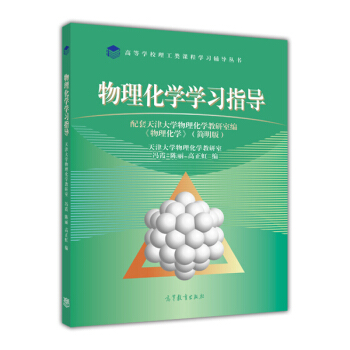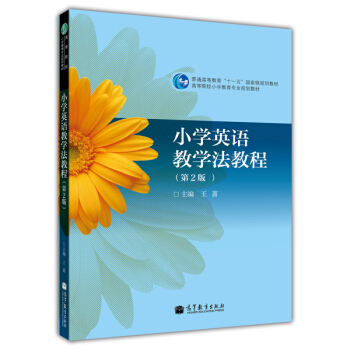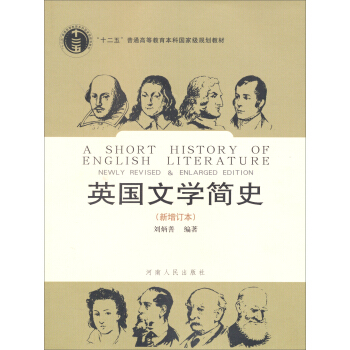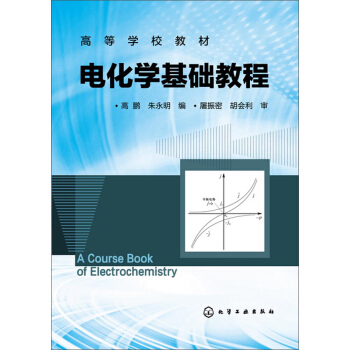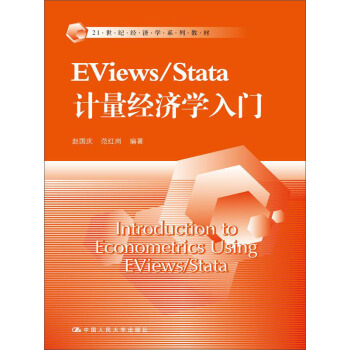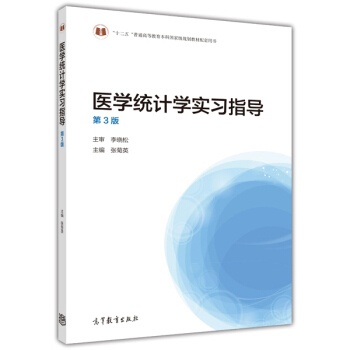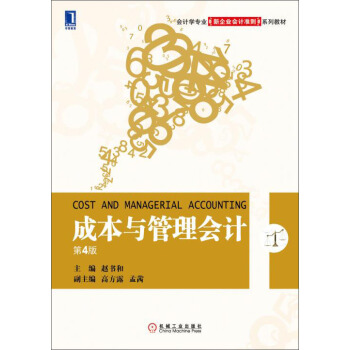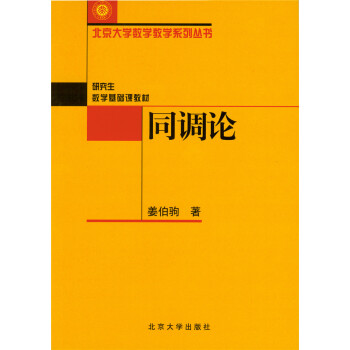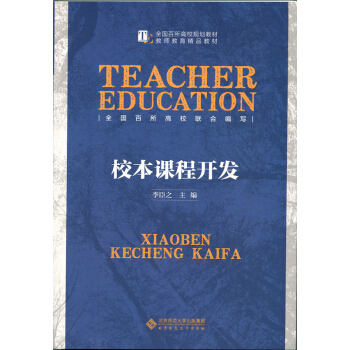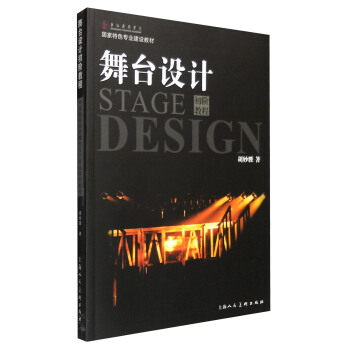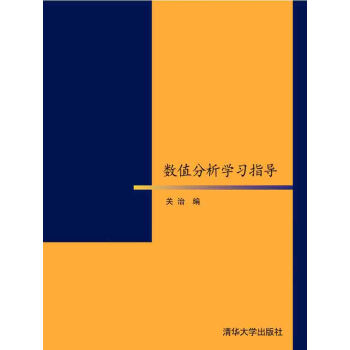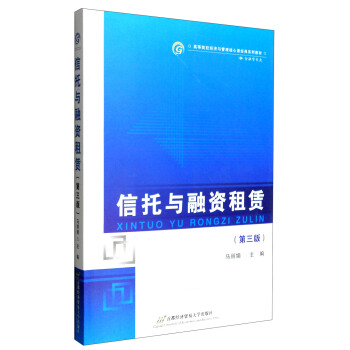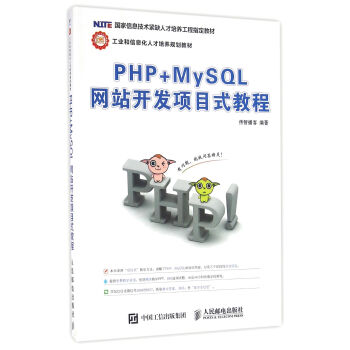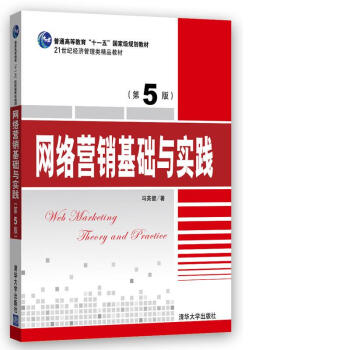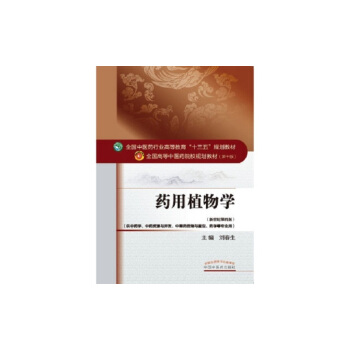![计算物理学(第2版) [Computational Physics Second Edition]](https://pic.windowsfront.com/10904477/6cea3959-2061-4502-8d16-e456241cd5c8.jpg)

具体描述
内容简介
《计算物理学(第2版)》是一部理论物理研究的计算方法的教程。这是第二版,在第一版的基础上做了大量的更新,内容更加全面。新增加的部分包括,有限元方法,格点boltzmann模拟,密度函数理论,量子分子动力学,monte carlo模拟和一维量子系统的对角化。书中囊括了了物理研究的很多不同方面和不同计算方法论。如monte carlo方法和分子模拟动力学以及各种电子结构方法论,偏微分方程解方法,格点规范理论。全书都在强调不同物理场中的方法之间的关系,内容较为简洁明快,具有基本编程,数值分析,场论以及凝聚态理论和统计物理的本科知识背景就可以完全读懂《计算物理学(第2版)》。不管是理论物理,计算物理还是实验物理专业的研究生还是科研人员,《计算物理学(第2版)》都相当有参考价值。目次:导论;具有球对称势的量子散射;schrdinger方程的变分大法;hartree-fock方法;密度函数理论;周期性固态schr.dinger方程解法;经典平衡态统计力学;分子动力学模拟;量子分子动力学;monte carlo方法;变换矩阵和自旋链的对角化;量子monte carlo方法,偏微分方程的有限元方法,流体力学的lattice boltzmann方法,格点场论的计算方法;高效能计算和并行法;附:数值法;随机数发生器。读者对象:物理专业,包括理论物理,计算物理,实验物理的高年级本科生,研究生和相关的科研人员。
内页插图
目录
preface to the first editionpreface to the second edition
1 introduction
1.1 physics and computational physics
1.2 classical mechanics and statistical mechanics
1.3 stochastic simulations
1.4 electrodynamics and hydrodynamics
1.5 quantum mechanics
1.6 relations between quantum mechanics and classical statistical physics
1.7 quantum molecular dynamics
1.8 quantum field theory
1.9 about this book
exercises
references
2 quantum scattering with a spherically symmetric
potential
2.1 introduction
2.2 a program for calculating cross sections
2.3 calculation of scattering cross sections
exercises
references
3 the variational method for the schr'odinger equation
3.1 variational calculus
3.2 examples of variational calculations
3.3 solution of the generalised eigenvalue problem
3.4 perturbation theory and variational calculus
exercises
references
4 the hartree-fock method
4.1 introduction
4.2 the bom-oppenheimer approximation and the independent-particle method
4.3 the helium atom
4.4 many-electron systems and the slater determinant
4.5 self-consistency and exchange: hartree-fock theory
4.6 basis functions
4.7 the structure of a hartree-fock computer program
4.8 integrals involving gaussian functions
4.9 applications and results
4.10 improving upon the hartree-fock approximation
exercises
references
5 density functional theory
5.1 introduction
5.2 the local density approximation
5.3 exchange and correlation: a closer look
5.4 beyond dft: one- and two-particle excitations
5.5 a density functional program for the helium atom
5.6 applications and results
exercises
references
6 solving the schriodinger equation in periodic solids
6.1 introduction: definitions
6.2 band structures and bloch's theorem
6.3 approximations
6.4 band structure methods and basis functions
6.5 augmented plane wave'methods
6.6 the linearised apw (lapw) method
6.7 the pseudopotential method
6.8 extracting information from band structures
6.9 some additional remarks
6.10 other band methods
exercises
references
7 classical equilibrium statistical mechanics
7.1 basic theory
7.2 examples of statistical models; phase transitions
7.3 phase transitions
7.4 determination of averages in simulations
exercises
references
molecular dynamics simulations
8.1 introduction
8.2 molecular dynamics at constant energy
8.3 a molecular dynamics simulation program for argon
8.4 integration methods: symplectic integrators
8.5 molecular dynamics methods for different ensembles
8.6 molecular systems
8.7 long-range interactions
8.8 langevin dynamics simulation
8.9 dynamical quantities: nonequilibrium molecular dynamics
exercises
references
9 quantum molecular dynamics
9.1 introduction
9.2 the molecular dynamics method
9.3 an example: quantum molecular dynamics for the hydrogen molecule
9.4 orthonormalisation; conjugate gradient and rm-diis techniques
9.5 implementation of the car-parrinello technique for pseudopotential dft
exercises
references
10 the monte carlo method
10.1 introduction
10.2 monte carlo integration
10.3 importance sampling through markov chains
10.4 other ensembles
10.5 estimation of free energy and chemical potential
10.6 further applications and monte carlo methods
10.7 the temperature of a finite system
exercises
references
11 transfer matrix and diagonalisation of spin chains
11.1 introduction
11.2 the one-dimensional ising model and the transfer matrix
11.3 two-dimensional spin models
11.4 more complicated models
11.5 'exact' diagonalisation of quantum chains
11.6 quantum renormalisation in real space
11.7 the density matrix renormalisation group method
exercises
references
12 quantum monte carlo methods
12.1 introduction
12.2 the variational monte carlo method
12.3 diffusion monte carlo
12.4 path-integral monte carlo
12.5 quantum monte carlo on a lattice
12.6 the monte carlo transfer matrix method
exercises
references
13 the finite element method for partial differential equations
13.1 introduction
13.2 the poisson equation
13.3 linear elasticity
13.4 error estimators
13.5 local refinement
13.6 dynamical finite element method
13.7 concurrent coupling of length scales: fem and md
exercises
references
14 the lattice boltzmann method for fluid dynamics
14.1 introduction
14.2 derivation of the navier-stokes equations
14.3 the lattice boltzmann model
14.4 additional remarks
14.5 derivation of the navier-stokes equation from the
lattice boltzmann model
exercises
references
15 computational methods for lattice field theories
15.1 introduction
15.2 quantum field theory
15.3 interacting fields and renormalisation
15.4 algorithms for lattice field theories
15.5 reducing critical slowing down
15.6 comparison of algorithms for scalar field theory
15.7 gauge field theories
exercises
references
16 high performance computing and parallelism
16.1 introduction
16.2 pipelining
16.3 parallelism
16.4 parallel algorithms for molecular dynamics
references
appendix a numerical methods
a1 about numerical methods
a2 iterative procedures for special functions
a3 finding the root of a function
a4 finding the optimum of a function
a5 discretisation
a6 numerical quadratures
a7 differential equations
a8 linear algebra problems
a9 the fast fourier transform
exercises
references
appendix b random number generators
b1 random numbers and pseudo-random numbers
b2 random number generators and properties of pseudo-random numbers
b3 nonuniform random number generators
exercises
references
index
精彩书摘
Now we can define the problems in a more abstract way. It is convenient toconsider continuum problems. The candidate solutions (for example the possibleconformations) form a phase space, and the merit function has some complicatedshape on that space - it contains many valleys and mountains, which can be verysteep. The solution we seek corresponds to the lowest valley in the landscape. Notethat the landscape is high-dimensional. You may think, naively, that a standardnumerical minimum finder can solve this problem for you. However, this is notthe case as such an algorithm always needs a starting point, from which it findsthe nearest local minimum, which is not necessarily the best you can find in theconformation space. The set of points which would go to one particular local min-imum when fed into a steepest descent or other minimum-finder (see AppendixA4) is called the basin of attraction of that minimum. Once we are in the basinof attraction of the global minimum we can easily find this global minimum; theproblem is to find its basin of attraction.……
前言/序言
用户评价
当《计算物理学(第2版)》这本书摆在我面前时,我感受到了它所蕴含的“实践智慧”。我之前在学习物理的时候,总是感觉理论和实际的计算之间隔着一道鸿沟,而这本书正是这座桥梁。它的设计风格很务实,没有过多的修饰,但内容却显得非常接地气。我特别喜欢书中对如何将物理概念转化为计算模型的过程的讲解。例如,在介绍模拟量子系统的薛定谔方程求解时,书中详细讨论了如何将微分方程转化为矩阵方程,以及如何选择合适的离散化方法来保证计算的精度和效率。这对我理解量子力学的数值模拟非常有帮助。我注意到,书中还对一些常用的数值库和工具的使用进行了介绍。在实际的科学研究中,善于利用现有的工具可以大大提高工作效率。书中对此的讲解,让我对如何选择和使用合适的计算工具有了更清晰的认识。我还在书中看到了对如何进行有效的参数寻优的讨论。在很多物理实验和模拟中,我们需要找到一组最优参数来拟合实验数据或达到某种目标。书中对这些优化方法的介绍,让我看到了计算物理学在数据分析和模型拟合中的应用。书中对数值方法的稳定性问题有着非常深入的分析,特别是当系统存在非线性或奇点时,如何选择能够保持计算稳定的算法。这让我意识到,在进行科学计算时,对算法的鲁棒性进行充分的考量是多么重要。我还在书中看到了对如何进行代码优化和提高计算效率的讨论。对于大规模的科学计算来说,计算效率往往是决定性的因素。书中对此的介绍,让我对如何编写高效的计算代码有了更深的理解。这本书给我的感觉是“理论与实践相结合,注重效率,启发创新”,它不仅传授了知识,更重要的是培养了我用计算思维去解决物理问题的能力。
评分说实话,我一开始拿到《计算物理学(第2版)》这本书,更多的是抱着一种“填补知识空白”的心态。我从事的领域对计算能力的要求相对较低,所以对这方面的理论和实践都知之甚少。这本书的外观设计简洁大方,纸张的质感也很好,拿在手里感觉很实在。当我开始阅读时,我惊喜地发现,书中对复杂概念的阐释是如此的清晰透彻。例如,书中在介绍数值积分方法时,不仅仅列举了牛顿-科特斯公式,还详细对比了梯形法则、辛普森法则等不同方法的精度和效率,并通过具体的物理例子,比如计算引力势能,直观地展示了不同方法的数值误差是如何产生的,以及如何通过增加离散点或提高公式阶数来改善计算结果。我尤其喜欢书中在讲解数值微分时,对于边界条件的处理方式的讨论。在很多实际物理问题中,边界条件是影响计算稳定性和精度的关键因素,书中不仅给出了具体的处理技巧,还对不同处理方式的优缺点进行了分析,这对于避免在实际编程中踩坑非常有帮助。我发现书中还涉及了一些我之前从未接触过的数值方法,例如求解偏微分方程的有限元方法。虽然这部分内容比较深入,但作者通过生动的图示和逐步推导,让我对这种方法的原理有了初步的认识,也激发了我进一步学习的兴趣。这本书的逻辑结构也做得非常好,从基础的数值逼近,到微分方程的求解,再到更复杂的蒙特卡洛方法等,层层递进,使得学习过程更加顺畅。我还在书中看到了对一些经典计算物理问题的详细分析,这些案例不仅仅是理论的演示,更像是实际的“项目”,让我能够将学到的知识应用到具体的物理场景中,感受计算物理学的强大力量。这本书给我留下了深刻的第一印象,它不仅传授知识,更重要的是培养了一种科学的计算思维。
评分《计算物理学(第2版)》这本书,我拿到手里的时候,首先就被它那种“严谨而富有逻辑”的气质所吸引。我之前对计算物理学涉猎不深,更多的是一种概念上的模糊,而这本书给我了一种“拨云见日”的感觉。它的设计风格很古典,没有过多的花哨,但每一个公式,每一个图例都显得恰到好处。我特别喜欢书中对数学原理的讲解,它不是简单地抛出公式,而是从物理问题的本质出发,一步一步地推导出数学模型,再将数学模型转化为计算算法。例如,在讲解边界条件的处理时,书中通过分析电磁场在导体边界的物理行为,引出了Dirichlet边界条件和Neumann边界条件,并详细阐述了它们在数值求解中的具体实现方式。这让我觉得学习过程非常顺畅,也更容易理解算法背后的物理依据。我注意到,书中还对一些经典的数值算法进行了深入的剖析,比如求解大型稀疏矩阵的共轭梯度法。书中详细分析了该方法的收敛性,以及在实际应用中需要注意的一些细节,比如预条件子的选择。这对于我进行大规模的物理模拟非常具有指导意义。我还在书中看到了对如何进行模型验证和结果解释的讨论。在科学研究中,仅仅得到一个计算结果是不够的,更重要的是如何验证结果的可靠性,以及如何从计算结果中提取出有物理意义的信息。书中对此的详细阐述,让我对如何进行科学的计算研究有了更清晰的认识。书中对一些数值方法的局限性和潜在的陷阱也有着坦诚的分析,比如当输入数据存在量纲不一致或数量级差距过大时,如何避免出现计算错误。这种对细节的关注,让我觉得这本书非常可靠。这本书的整体风格是“逻辑严密,论证充分,贴近实际”,它为我提供了一个扎实的计算物理学理论基础,也为我未来的科研工作打下了坚实的基础。
评分这本书的名字叫《计算物理学(第2版)》,拿到它的时候,其实我心里是有些忐忑的。毕竟“计算物理学”这四个字本身就带着一股挑战性,而“第2版”又暗示着内容的深化和革新。我本身是在一个不太注重计算的物理方向深耕,所以这本书对我来说,更像是一个探索未知领域的敲门砖。初翻开,首先映入眼帘的是那清晰且专业的排版,图表清晰,公式规范,这种视觉上的舒适感在一定程度上缓解了我的学习压力。我特别欣赏的是它在介绍基本概念时,并非简单地堆砌公式,而是花了相当篇幅去解释这些概念的物理意义以及它们在数值计算中的体现。例如,在讲到有限差分法时,书中不仅给出了差分格式的推导,还详细阐述了截断误差的来源和影响,甚至讨论了不同阶数差分格式在实际计算中的表现差异。这让我感觉作者不仅仅是在教我如何“算”,更是在引导我理解“为什么这么算”。书中还穿插了不少经典的计算物理问题案例,从简单的粒子运动模拟到复杂的场论计算,每一个案例都仿佛是作者精心设计的“实验”,引导读者一步步去构建模型、编写代码、分析结果。我注意到,在介绍这些案例时,作者并没有直接给出完整的代码,而是给出了核心的算法思路和关键步骤,鼓励读者自己去思考和实现。这种“授人以渔”的方式,虽然初期需要花费更多精力,但对于培养独立解决问题的能力来说,无疑是极有价值的。我还在书中看到了对一些高级算法的初步介绍,虽然篇幅不多,但足以让我对更复杂的计算方法产生兴趣,并意识到计算物理学广阔的应用前景。总的来说,这本书的整体风格是严谨而富有启发性的,它不仅仅是一本教材,更像是一位经验丰富的导师,在我探索计算物理学的道路上,提供了坚实的指引和宝贵的灵感。我期待着在接下来的学习中,能更深入地领略这本书的精髓。
评分这本书《计算物理学(第2版)》在我手中,给我的第一印象是它的“系统性”。我之前零散地接触过一些计算物理学的概念,但总觉得缺乏一个清晰的脉络。这本书的外观设计很简洁,但内容却显得非常充实和有条理。我特别喜欢书中对各种数值方法的起源和发展历程的介绍。它不是直接给出结论,而是从解决特定物理问题出发,层层递进地引入新的方法。例如,在讲解求解非线性方程时,书中从牛顿法的几何意义入手,然后引申到各种变种方法,并详细分析了它们的收敛速度和适用范围。这让我觉得学习过程非常自然,也更容易理解每种方法的设计初衷。我注意到,书中还对一些经典物理问题进行了详尽的计算分析。比如,在模拟简谐振子的衰减振动时,书中不仅给出了不同数值方法的计算结果,还对它们的长期误差进行了详细的比较,这对于理解数值方法的稳定性和精度有着深刻的启示。我还在书中看到了对一些现代计算方法的介绍,例如,关于相空间轨迹的重构以及对分形结构的分析。这让我看到了计算物理学在探索复杂非线性系统中的巨大潜力。书中对误差分析的部分做得尤为出色,它不仅仅是给出误差公式,而是深入探讨了不同误差来源(截断误差、舍入误差、模型误差)的相互作用,以及如何通过优化算法和参数来减小总误差。这对于任何一个从事科学计算的人来说,都是至关重要的。我还在书中看到了对并行计算和高性能计算的初步探讨。在处理大规模物理模拟时,并行计算能力是必不可少的,书中对此的介绍让我对未来的学习方向有了更清晰的认识。这本书的整体风格是“结构严谨,内容丰富,启发思维”,它为我打开了通往计算物理学更深层次领域的大门。
评分在我拿到《计算物理学(第2版)》这本书的时候,我的心情是既期待又有点紧张的。期待是因为我深知计算物理学在现代物理研究中的重要性,而紧张则源于我对自身计算能力的不足。这本书的设计风格很朴实,封面没有花哨的图案,但翻开书页,扑面而来的严谨和专业感让我立刻放松了下来。我尤其喜欢书中对物理模型构建的讲解。它不仅仅是教你如何套用公式,而是引导你思考如何将一个复杂的物理现象抽象成一个可以进行数值计算的模型。例如,在讲解模拟粒子散射时,书中详细分析了如何选择合适的模型,比如卢瑟福散射,然后讨论了如何将其离散化,以及如何考虑各种物理因素,如截断误差、离散化误差和随机误差。这种从物理概念到数值实现的转化过程,书中都讲解得非常细致。我发现书中还包含了一些关于可视化技术的内容。在计算物理学中,将计算结果以直观的图形方式呈现出来,对于理解物理过程和发现规律至关重要。书中不仅介绍了如何使用常见的绘图库来生成各种类型的图表,还讨论了如何选择合适的颜色映射和视角来更好地展示三维数据。这对于我这种喜欢通过视觉来理解事物的人来说,无疑是一大福音。我还在书中看到了对一些优化算法的介绍,比如梯度下降法和牛顿法,以及它们在寻找物理量极值或解方程组中的应用。这些内容让我意识到,计算物理学不仅仅是模拟,更包含了寻找最优解和理解系统行为的内在驱动力。书中对一些数值方法的鲁棒性也有着充分的讨论,比如当输入数据存在噪声时,如何选择能够保持稳定性的算法。这种对实际工程问题的关注,让我觉得这本书非常有价值。总的来说,这本书给我的感觉是“理论扎实,实践导向,注重细节”,它是我深入学习计算物理学的一本极佳入门读物。
评分拿到《计算物理学(第2版)》这本书,我最直观的感受就是它的“厚重感”。这不仅仅是物理上的重量,更是内容上的充实和专业。我一直觉得,计算物理学是一个非常实用但同时又极具挑战性的学科,它要求学习者既要有扎实的物理理论基础,又要有强大的编程和算法能力。这本书的设计非常人性化,每一章都逻辑清晰,循序渐进。我特别喜欢书中对一些核心算法的讲解方式,它不是简单地给出公式,而是从物理问题的本质出发,引导读者思考如何将其转化为可计算的模型。比如,在介绍求解常微分方程的Runge-Kutta方法时,书中不仅仅给出了四阶Runge-Kutta的公式,还深入分析了其误差项,并与欧拉法进行了详细的对比,通过一个行星轨道模拟的例子,直观地展示了高阶方法在长期积分中的优势。我还在书中看到了对随机过程模拟的介绍,这对我来说是一个全新的领域。书中讲解了如何使用伪随机数生成器来模拟玻尔兹曼分布的粒子行为,以及如何利用蒙特卡洛方法来计算复杂的物理量,比如格林函数。这些内容让我对计算物理学在统计物理和量子多体理论中的应用有了更深的认识。我非常欣赏书中对数值不稳定性问题的探讨。在进行数值计算时,精度和稳定性往往是矛盾的,书中详细分析了引起数值不稳定的原因,比如舍入误差、截断误差以及病态问题,并给出了一些避免或减缓这些问题的策略。这种对细节的关注,对于实际的科学研究来说至关重要。我还注意到,书中使用了大量的插图和图表来辅助说明,这使得一些抽象的数学概念和算法原理变得易于理解。总体而言,这本书给我一种“内容详实,讲解深入,贴近实际”的阅读体验,它是我探索计算物理学世界的一本得力助手。
评分收到《计算物理学(第2版)》这本书,我的第一感觉是它充满了“求真务实”的精神。我之前对计算物理学接触不多,更多的是停留在一些浅显的概念层面。这本书的外观设计很低调,但其内容散发出的专业气息却扑面而来。我特别欣赏书中对于算法的讲解,它不是枯燥的公式堆砌,而是紧密结合物理现象,让读者在解决具体物理问题的过程中学习算法。例如,在介绍求解线性方程组的迭代法时,书中并没有一开始就给出高深的数学推导,而是从一个简单的物理模型入手,比如电路分析中的节点电压法,然后逐步引出雅可比迭代和高斯-赛德尔迭代等方法,并详细讨论了它们的收敛条件和效率。这让我觉得学习过程非常自然,也更容易理解算法背后的物理意义。书中对傅里叶变换在物理学中的应用也有着非常深入的讲解。从信号处理到图像分析,再到量子力学中的动量空间表示,书中都给出了详细的数值计算方法,包括快速傅里叶变换(FFT)的原理和实现技巧。这对我来说是非常有价值的内容,因为傅里叶变换在很多物理研究中都是必不可少的工具。我注意到,书中还涉及了一些更高级的数值方法,比如求解李萨如曲线的微分方程组,以及对混沌动力学系统的模拟。这些案例让我看到了计算物理学在探索复杂系统中的强大能力。书中对一些数值方法的局限性也有着坦诚的讨论,比如当数值方法遇到奇异点或振荡时,如何进行处理。这种诚实的态度让我对书中的内容更加信任。我一直在寻找一本能够真正引导我动手实践的计算物理学书籍,而这本书无疑给了我很大的信心。它不仅提供了理论知识,更重要的是激发了我用计算工具去探索物理世界的强烈愿望。
评分拿到《计算物理学(第2版)》这本书,我的第一感觉是它充满了“探索精神”。我一直觉得,计算物理学是现代科学前沿探索的重要工具,而这本书正是引领我踏上这段旅程的向导。它的设计风格很现代,页面布局清晰,视觉效果也很舒服。我特别欣赏书中对一些前沿计算物理学问题的讲解。例如,在介绍分子动力学模拟时,书中详细讲解了如何构建原子模型,如何选择合适的力场,以及如何计算粒子间的相互作用力。这让我对如何模拟微观世界有了全新的认识。我注意到,书中还对如何进行不确定性量化进行了深入的探讨。在科学研究中,准确评估计算结果的不确定性是至关重要的。书中对各种不确定性来源的分析,以及如何通过统计方法来量化这些不确定性,让我受益匪浅。我还在书中看到了对如何进行随机过程模拟的详细介绍,包括如何生成各种概率分布的随机数,以及如何利用蒙特卡洛方法来解决复杂的物理问题,比如计算高维积分或模拟相变过程。这让我看到了计算物理学在统计物理和复杂系统研究中的强大应用。书中对数值方法的精度和效率进行了详细的权衡分析。它不仅仅是给出方法的介绍,而是深入分析了不同方法在不同场景下的优劣,以及如何根据具体问题来选择最合适的方法。这让我意识到,在科学计算中,没有最优的方法,只有最适合的方法。我还在书中看到了对如何进行可视化分析的深入介绍,包括如何使用各种高级的绘图技术来展示复杂的数据,以及如何从数据中提取有意义的物理信息。这本书的整体风格是“前沿导向,方法多样,注重分析”,它不仅让我学到了知识,更重要的是激发了我用计算工具去探索未知世界的浓厚兴趣。
评分《计算物理学(第2版)》这本书,在我眼中,充满了“化繁为简的智慧”。我一直觉得计算物理学是一门将抽象的物理概念转化为具体可执行代码的学科,而这本书正是传达了这种智慧。它的设计风格很现代,排版清晰,图表丰富,读起来不会感到枯燥。我特别喜欢书中对一些复杂计算方法的直观讲解。例如,在介绍数值求解薛定谔方程时,书中不仅仅是给出了矩阵对角化或传播子方法,而是通过类比物理系统中的能量量子化和态演化,生动地解释了这些方法的原理。这让我更容易理解这些抽象的计算过程。我注意到,书中还对如何利用计算工具来探索物理规律进行了深入的阐述。它不仅仅是教你如何计算,更重要的是引导你如何通过计算来发现和理解物理现象。例如,书中通过模拟临界现象附近的相变过程,展示了如何通过改变参数来观察系统行为的变化,以及如何分析临界指数。这让我看到了计算物理学在揭示物理本质方面的巨大潜力。书中对如何处理数值解的收敛性和稳定性问题进行了详细的讨论。它不仅仅是给出公式,而是深入分析了在不同算法和参数选择下,计算结果可能出现的偏差,以及如何通过调整参数或更换算法来获得更可靠的结果。这对于我进行严谨的科学计算非常有帮助。我还在书中看到了对如何进行误差估计和不确定性传播的介绍。在任何科学计算中,了解结果的精度和可靠性都是至关重要的。书中对误差的来源和传播方式的清晰讲解,让我对如何评估计算结果的置信度有了更深的认识。这本书的整体风格是“概念清晰,方法直观,注重应用”,它不仅是一本教材,更像是一位经验丰富的引路人,带领我用计算的视角去发现物理世界的奥秘。
评分铝砷化镓(AlGaAs)-红色及红外线
评分学习高等知识需要阅读名著,一字一句的读。
评分2.情调照明:[2]以人的需求来设计灯具。情调照明是以人情感为出发点,从人的角度去创造一种意境般的光照环境。情调照明与情景照明有所不同,情调照明是动态的,可以满足人的精神需求的照明方式,使人感到有情调;而情景照明是静态的,它只能强调场景光照的需求,而不能表达人的情绪,从某种意义上说,情调照明涵盖情景照明。情调照明包含四个方面:一是环保节能,二是健康,三是智能化,四是人性化。[3]
评分好好好好好好好好好好好好,好的
评分以场所为出发点,旨在营造一种漂亮、绚丽的光照环境,去烘托场景效果,使人感觉到有场景氛围。
评分这套风格风格一致、符号统一、前后连贯、内容全面的教材,不仅对理论物理专业的大学生、教师本书是Walter Thirring的早期两卷分子和原子量子力学和大系统量子力学的结合,是Walter Thirring的著名数学物理系列教材的第3,4卷的新版本。现在的这个版本已经很成熟,也很经典,重点突出,清晰易懂。可以作为高年级本科生以及本科生教材,也是一本很好的科研和教师参考书。全书内容分两部分。第1部分主要讲述量子力学,特别是其在散射理论、原子以及分子中的应用。第2部分深入研究量子统计力学对基本概念的检验,例如熵、遍历性以及热动力函数等。本书的起点低,完全是建立在基本概念的基础上。数学的工具主要是运用泛函分析,例如,Hilbert空间上的有界算子、无界算子、算子代数等。这也为检验实验中的数字数据提供了正确的工具。作为一本教科书,作者很注重使其易读易懂和富于启发性,公式的推导和例题的分析尽可能地详尽。每一章都给出了几个习题,它们的总量虽然不大,但每个题目都经过了精心挑选,使其对深入理解课程内容和应用其解决实际问题有实质性的帮助。
评分剑桥的书,就是没话说
评分英语的 读起来很慢 但是内容都很有用
评分详细介绍了物理学中的常用计算方法,对于实验和理论都适合。
相关图书
本站所有内容均为互联网搜索引擎提供的公开搜索信息,本站不存储任何数据与内容,任何内容与数据均与本站无关,如有需要请联系相关搜索引擎包括但不限于百度,google,bing,sogou 等,本站所有链接都为正版商品购买链接。
© 2026 windowsfront.com All Rights Reserved. 静流书站 版权所有


